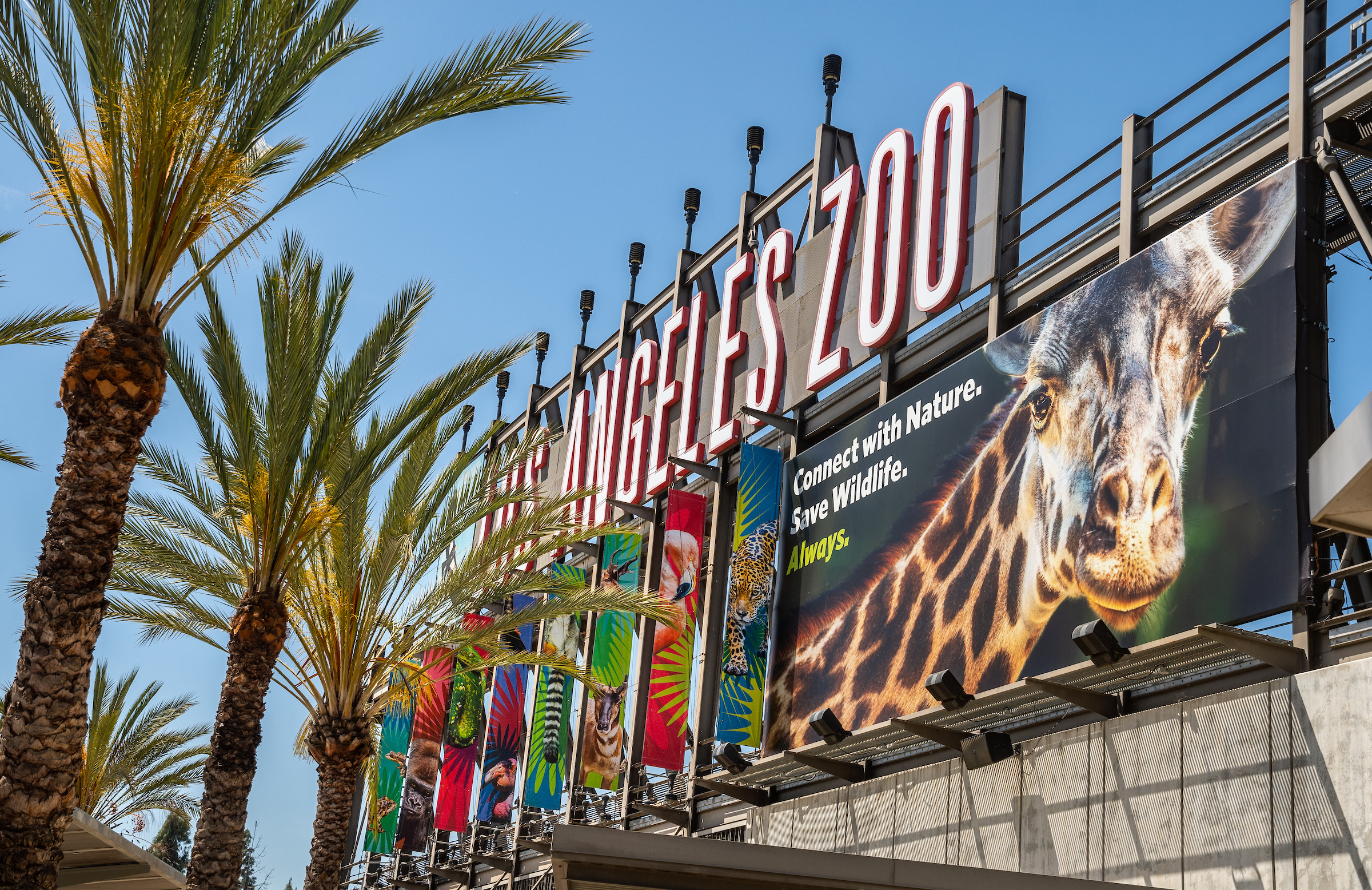The Obscure Obscurus
by Alex Oliver
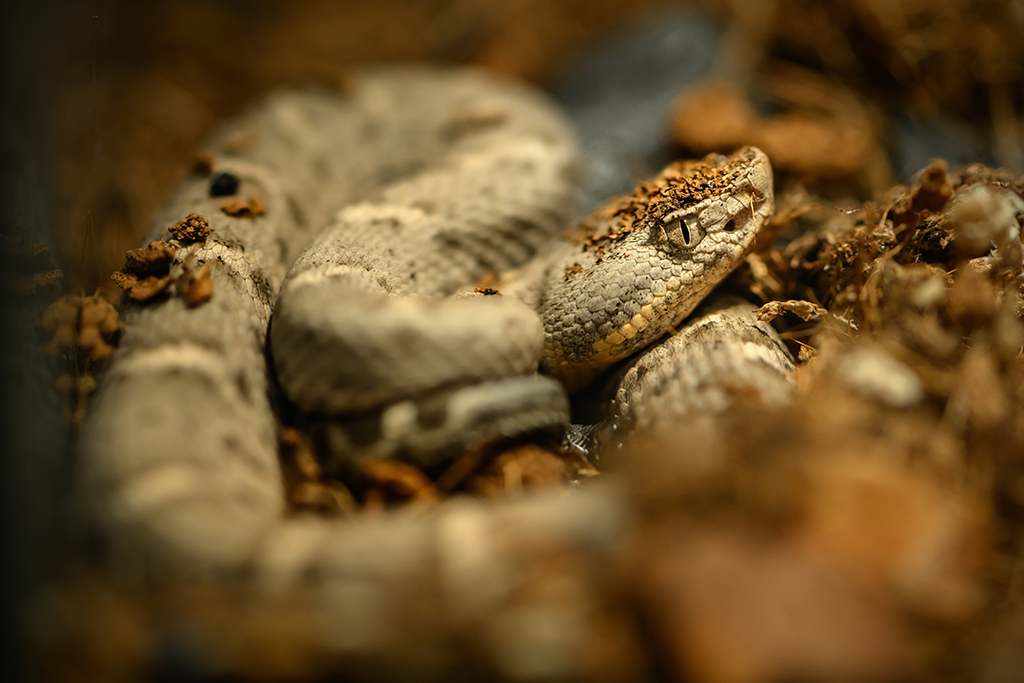
Do you ever lie awake at night pondering the fate of Crotalus willardi obscurus? If so, you have something in common with Byron Wusstig, acting curator of ectotherms at the Los Angeles Zoo. Of course, most readers will never have heard of this little-known reptile, but Wusstig and his colleagues are hoping to change that.
The L.A. Zoo, with its vast experience in keeping and breeding rattlesnakes and other vipers, has joined a very exciting project to help repopulate obscurus (commonly known as the New Mexico ridge-nosed rattlesnake) back into parts of its historic range, where it has all but disappeared.
Rare Rattler
The New Mexico ridge-nosed rattlesnake is the rarest rattlesnake in North America. This small, mountain-dwelling snake lives in high elevations (typically 5,000 to 9,000 feet) in the American southwest, including the United States and Mexico. This subspecies is limited to “sky islands”—isolated mountain ranges surrounded by desert. There are distinct populations throughout three mountain ranges: one in New Mexico, one bordering Arizona and New Mexico, and a third, larger range just south of the Mexican border.
In the United States, this subspecies is exceedingly rare. It’s almost absent from the Peloncillo Mountains (on the border of Arizona and New Mexico), where the habitat has grown warmer and drier. For a species that requires a specific elevation and temperature range, this poses a big problem. Temperature shifts, wildfires, and other climactic changes are believed to be among the biggest threats to this population. If temperatures continue to increase, snakes in the sky islands have no place to go. They’re surrounded by harsh, uninhabitable desert. Human activity in the area also brings increasing threats, but these risks are minimal compared to the warming and drying of that local climate.
The Peloncillo population has shrunk so much that there’s a loss of genetic diversity, which can lead to what’s called an “extinction vortex.” There are so few animals, there’s less genetic variability to be exchanged between mates. A few researchers who have been studying these animals in the field have seen physical abnormalities in the Peloncillo population—a key indicator that the subspecies would benefit from the increased genetic diversity that translocation would provide.
Moving individuals from regions where they are abundant to augment the Peloncillo population would introduce healthy new genes to the population, giving it a fighting chance against stressors. That’s where the L.A. Zoo and its partners come in.
Earlier this year, we signed on to participate in Project Obscurus, a collaborative effort led by the Rattlesnake Conservancy. This project involves the U.S. Fish and Wildlife Service (USFWS), Arizona Game and Fish Department, and New Mexico Department of Game and Fish; researchers from the Universidad Autónoma de Aguascalientes and the IUCN Viper Specialist Group; and animal care teams from the Arizona-Sonora Desert Museum, Los Angeles Zoo, and San Antonio Zoo, as well as many other individuals and volunteers. “It takes a wide variety of people to make a project like this possible,” says Wusstig.
Heading South
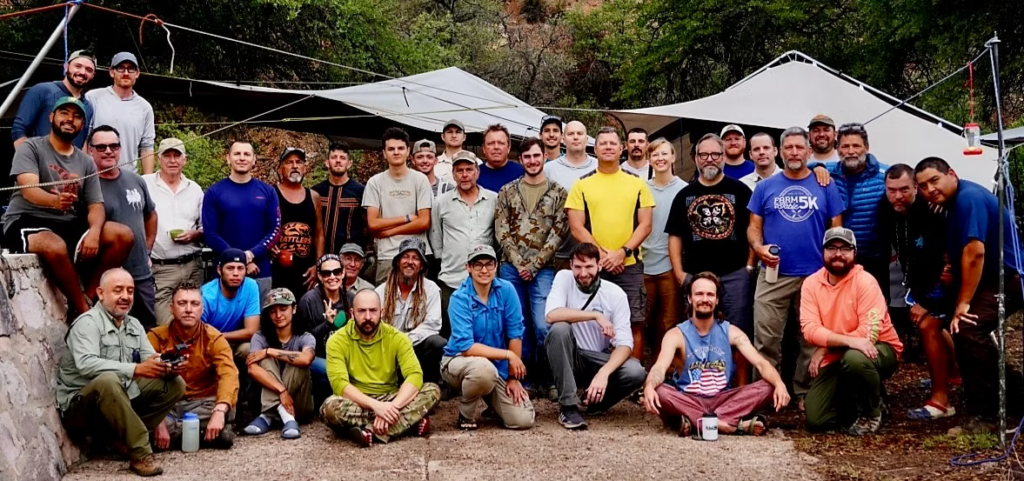
The New Mexico ridge-nosed rattlesnake has been federally protected since 1978, but this is the first large-scale recovery effort for the subspecies. It began when the Rattlesnake Conservancy received a federal recovery challenge grant from USFWS. For decades, biologists have been tracking populations, studying their habits, and undertaking population monitoring. Earlier this year, these efforts ramped up to include collecting animals from the wild to set up a breeding program.
In August 2024, a team of 43 conservation experts traveled to Sierra San Luis in northern Mexico to gather ridge-nosed rattlesnakes from the wild (all collecting was done with the proper permits from the U.S. and Mexico). The San Luis population is robust and can withstand a handful of animals being removed, and infusing new genetics into the Peloncillo population could give it the critical edge it needs to survive.
The team included people from diverse backgrounds from both countries, all brought together by their shared focus on vipers and rattlesnakes. This “who’s who” of viper/rattlesnake research and conservation included Wusstig, L.A. Zoo Animal Keeper Matt Patterson, and principal researcher Dr. Andrew Holycross, who has been studying these animals for the last 30 years. Another important collaborator is the landowner who granted the project permission to work on his land and find these animals in their range.
The three zoos involved in the project—Los Angeles Zoo, Arizona-Sonora Desert Museum, and San Antonio Zoo—are each tasked with caring for a small population of animals that will be the start of a breeding program. Offspring of these individuals will be candidates for reintroduction.
Hide and Seek
Over the course of seven days, the team spread out throughout the vast property, focusing on several canyons where the animals are known to frequent. But on any surveying trip, challenges are to be expected. Even in the right habitat, if the temperatures and humidity are not in the right zone, rattlesnakes may not turn up.
According to Wusstig, patience was key—waiting for the window when the environmental conditions were just right for rattlesnakes. On day four, after a cool and heavy overnight rain, the rain stopped, the sun was out, and the snakes started moving. Everywhere.
The team hit their target, gathering all the founding animals needed to begin the breeding program at the three partner zoos. They also translocated 12 ridge-nosed rattlesnakes immediately from the San Luis mountains to the Peloncillos. One of those was a female who gave birth shortly after her collection (unlike many reptiles, rattlesnakes do not lay eggs but give birth to live offspring). For those newborns, the Peloncillos will be the only home they’ve known.
“Being able to spend time in the habitat of the species gives us, as animal keepers, a fresh perspective on the specific conditions that these snakes prefer and helps us to provide the best care,” says Wusstig.
This work is ongoing. The L.A. Zoo recently sent Acting Senior Animal Keeper Konin Teran and Animal Keeper Luc Myers on a second field survey trip. They travelled, this time within the U.S. home range of the New Mexico ridge-nosed rattlesnake, to assist with surveying the native obscurus population and setting up critical temperature mapping sensors, which will provide researchers a better understanding of the habitat.
Zoo Life

On arrival to the L.A. Zoo, all animals go through a thorough quarantine period to ensure they are in good health and to prevent any pathogens or diseases from infecting other animals. For the ridge-nosed rattlesnakes, quarantine will last about three months, allowing them to gradually acclimate to their new surroundings and diet.
Here at the Zoo, our goal is to recreate the environmental conditions of the montane habitat to ensure that these snakes thrive in human care. Specific attention needs to be paid to temperature, humidity, and light cycle. The staff is applying techniques they’ve honed over the years in successfully breeding a wide range of reptiles and amphibians. They created a hibernation plan and schedule for adjusting temperature and humidity in a stepwise fashion over time. They also manipulate light cycles throughout the year to mimic different seasons.
Surprise!
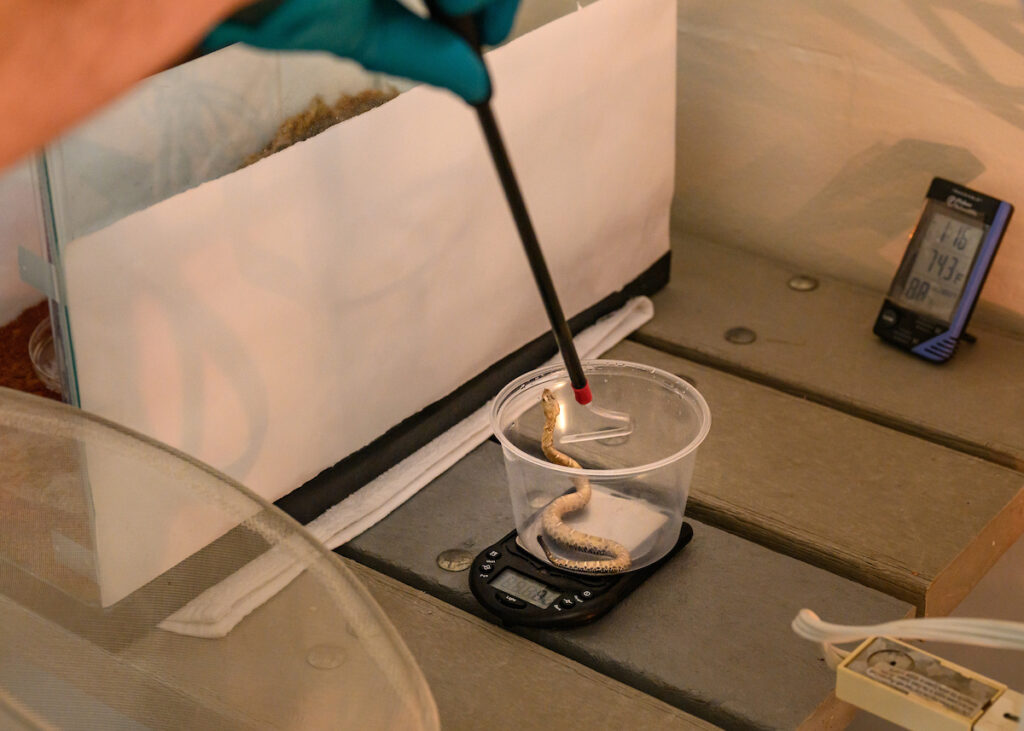
A week after ridge-nosed rattlesnakes arrived at the Zoo, a pregnant female gave birth to healthy offspring! Each neonate weighed just six grams—about as much as a quarter. We are now one step closer to translocating animals to the sky island mountains, as well as breeding zoo populations for years to come.
Much like the California condors in the California Condor Recovery Program, the ridge-nosed rattlesnakes will remain behind the scenes at the Zoo. One day, they may be viewable by guests, Wusstig says, but for now we are concentrating on breeding and bringing the subspecies back from the brink of extinction in the American Southwest.
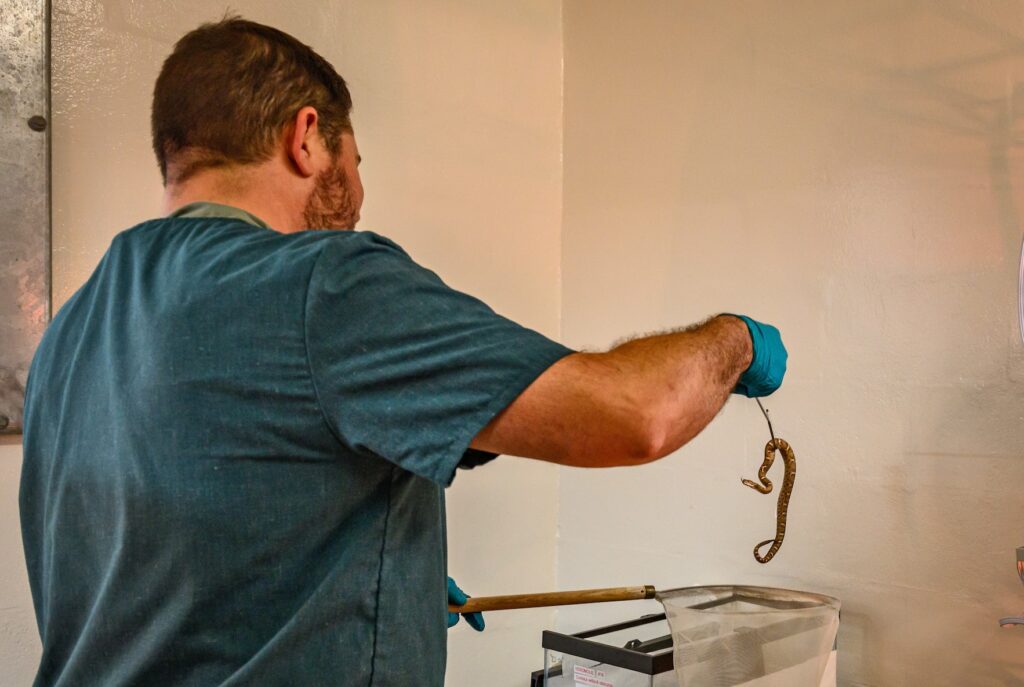
“It’s really rewarding to work with these programs in this capacity, being able to repatriate animals back into their wild habitat and know that we’re making a difference,” Wusstig says. “It’s a pretty cool thing to be part of.”
To learn more read our press release.

